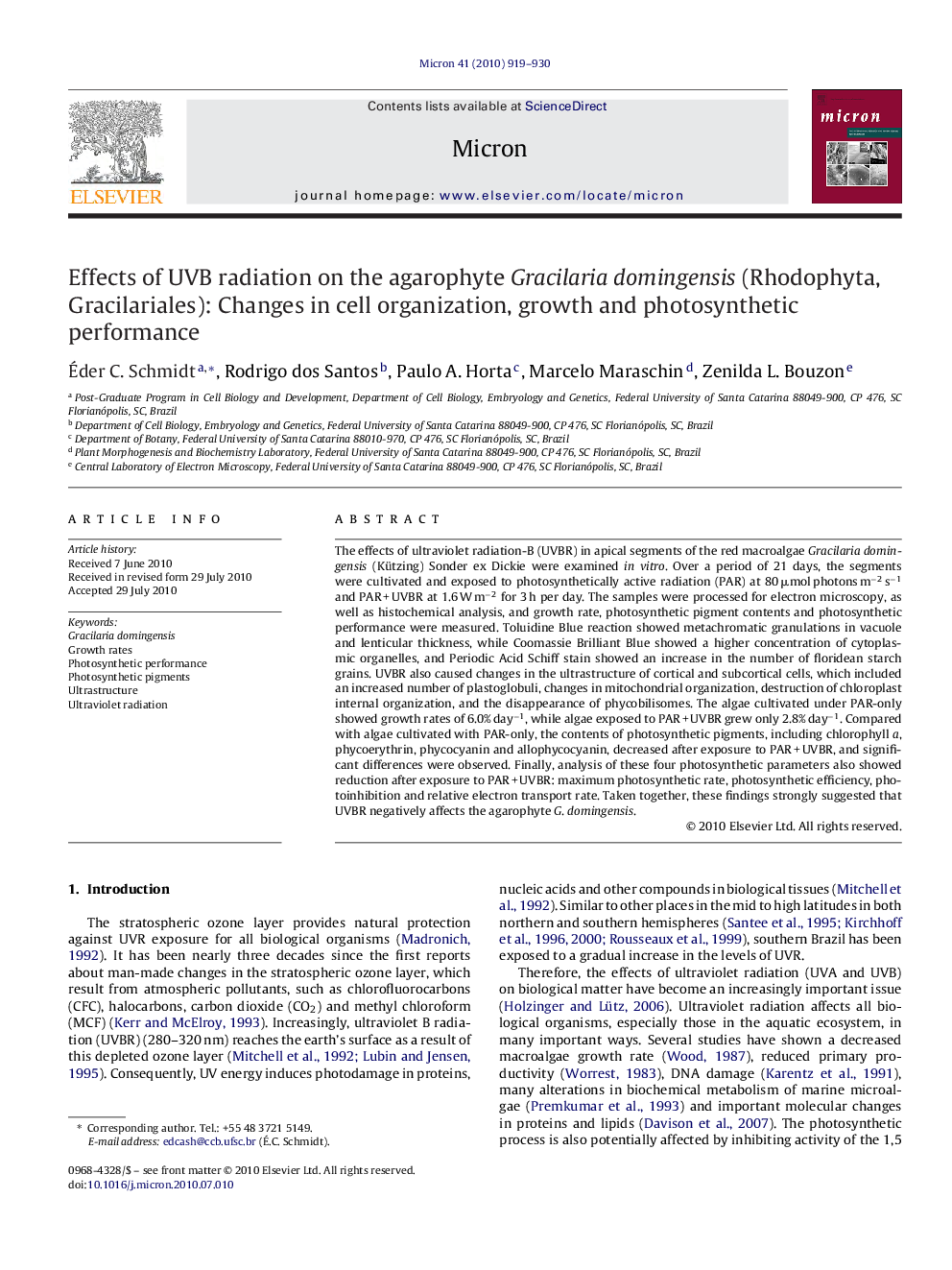| Article ID | Journal | Published Year | Pages | File Type |
|---|---|---|---|---|
| 1589401 | Micron | 2010 | 12 Pages |
Abstract
The effects of ultraviolet radiation-B (UVBR) in apical segments of the red macroalgae Gracilaria domingensis (Kützing) Sonder ex Dickie were examined in vitro. Over a period of 21 days, the segments were cultivated and exposed to photosynthetically active radiation (PAR) at 80 μmol photons mâ2 sâ1 and PAR + UVBR at 1.6 W mâ2 for 3 h per day. The samples were processed for electron microscopy, as well as histochemical analysis, and growth rate, photosynthetic pigment contents and photosynthetic performance were measured. Toluidine Blue reaction showed metachromatic granulations in vacuole and lenticular thickness, while Coomassie Brilliant Blue showed a higher concentration of cytoplasmic organelles, and Periodic Acid Schiff stain showed an increase in the number of floridean starch grains. UVBR also caused changes in the ultrastructure of cortical and subcortical cells, which included an increased number of plastoglobuli, changes in mitochondrial organization, destruction of chloroplast internal organization, and the disappearance of phycobilisomes. The algae cultivated under PAR-only showed growth rates of 6.0% dayâ1, while algae exposed to PAR + UVBR grew only 2.8% dayâ1. Compared with algae cultivated with PAR-only, the contents of photosynthetic pigments, including chlorophyll a, phycoerythrin, phycocyanin and allophycocyanin, decreased after exposure to PAR + UVBR, and significant differences were observed. Finally, analysis of these four photosynthetic parameters also showed reduction after exposure to PAR + UVBR: maximum photosynthetic rate, photosynthetic efficiency, photoinhibition and relative electron transport rate. Taken together, these findings strongly suggested that UVBR negatively affects the agarophyte G. domingensis.
Keywords
Related Topics
Physical Sciences and Engineering
Materials Science
Materials Science (General)
Authors
Ãder C. Schmidt, Rodrigo dos Santos, Paulo A. Horta, Marcelo Maraschin, Zenilda L. Bouzon,
